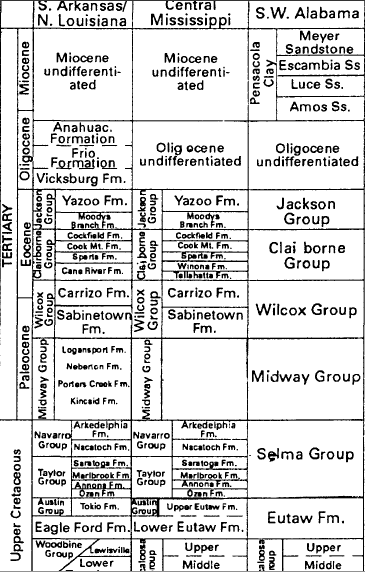|
Protrechina
''Protrechina'' is an extinct, monotypic genus of ant, first described by Wilson (1985) from a Middle Eocene fossil found near Malvern, Arkansas. The genus contains a single described species ''Protrechina carpenteri'' known from a solitary worker entombed in Claiborne Formation amber Amber is fossilized tree resin that has been appreciated for its color and natural beauty since Neolithic times. Much valued from antiquity to the present as a gemstone, amber is made into a variety of decorative objects."Amber" (2004). In Ma .... References Further readingProtrechina - AntWiki {{Taxonbar, from=Q16591710 Formicinae Monotypic ant genera Fossil ant genera ... [...More Info...] [...Related Items...] OR: [Wikipedia] [Google] [Baidu] |
Protrechina Carpenteri Holotype Antweb1
''Protrechina'' is an extinct, monotypic genus of ant, first described by Wilson (1985) from a Middle Eocene fossil found near Malvern, Arkansas. The genus contains a single described species ''Protrechina carpenteri'' known from a solitary worker entombed in Claiborne Formation amber Amber is fossilized tree resin that has been appreciated for its color and natural beauty since Neolithic times. Much valued from antiquity to the present as a gemstone, amber is made into a variety of decorative objects."Amber" (2004). In Ma .... References Further readingProtrechina - AntWiki {{Taxonbar, from=Q16591710 Formicinae Monotypic ant genera Fossil ant genera ... [...More Info...] [...Related Items...] OR: [Wikipedia] [Google] [Baidu] |
Formicinae
The Formicinae are a subfamily within the Formicidae containing ants of moderate evolutionary development. Formicines retain some primitive features, such as the presence of cocoons around pupae, the presence of ocelli in workers, and little tendency toward reduction of palp or antennal segmentation in most species, except subterranean groups. Extreme modification of mandibles is rare, except in the genera ''Myrmoteras'' and ''Polyergus''. However, some members show considerable evolutionary advancement in behaviors such as slave-making and symbiosis with root-feeding hemipterans. Finally, all formicines have very reduced stings and enlarged venom reservoirs, with the venom gland, specialized (uniquely among ants) for the production of formic acid. All members of the Formicinae "have a one-segmented petiole in the form of a vertical scale". Identification Formicine ants have a single node-like or scale-like petiole (postpetiole entirely lacking) and the apex of the abdom ... [...More Info...] [...Related Items...] OR: [Wikipedia] [Google] [Baidu] |
Monotypic
In biology, a monotypic taxon is a taxonomic group (taxon) that contains only one immediately subordinate taxon. A monotypic species is one that does not include subspecies or smaller, infraspecific taxa. In the case of genera, the term "unispecific" or "monospecific" is sometimes preferred. In botanical nomenclature, a monotypic genus is a genus in the special case where a genus and a single species are simultaneously described. In contrast, an oligotypic taxon contains more than one but only a very few subordinate taxa. Examples Just as the term ''monotypic'' is used to describe a taxon including only one subdivision, the contained taxon can also be referred to as monotypic within the higher-level taxon, e.g. a genus monotypic within a family. Some examples of monotypic groups are: Plants * In the order Amborellales, there is only one family, Amborellaceae and there is only one genus, '' Amborella'', and in this genus there is only one species, namely ''Amborella trichopoda. ... [...More Info...] [...Related Items...] OR: [Wikipedia] [Google] [Baidu] |
Middle Eocene
The Eocene ( ) Epoch is a geological epoch that lasted from about 56 to 33.9 million years ago (mya). It is the second epoch of the Paleogene Period in the modern Cenozoic Era. The name ''Eocene'' comes from the Ancient Greek (''ēṓs'', "dawn") and (''kainós'', "new") and refers to the "dawn" of modern ('new') fauna that appeared during the epoch. The Eocene spans the time from the end of the Paleocene Epoch to the beginning of the Oligocene Epoch. The start of the Eocene is marked by a brief period in which the concentration of the carbon isotope 13C in the atmosphere was exceptionally low in comparison with the more common isotope 12C. The end is set at a major extinction event called the ''Grande Coupure'' (the "Great Break" in continuity) or the Eocene–Oligocene extinction event, which may be related to the impact of one or more large bolides in Siberia and in what is now Chesapeake Bay. As with other geologic periods, the strata that define the start and end of the ... [...More Info...] [...Related Items...] OR: [Wikipedia] [Google] [Baidu] |
Malvern, Arkansas
Malvern is a city in and the county seat of Hot Spring County, Arkansas, United States. Founded as a railroad stop at the eastern edge of the Ouachita Mountains, the community's history and economy have been tied to available agricultural and mineral resources. The production of bricks from locally available clay has earned the city the nickname, "The Brick Capital of the World". The city had a population of 10,318 at the time of the 2010 census, and in 2019 the estimated population was 10,931. History Named after Malvern Hill, Virginia, Malvern was founded in 1870 by the Cairo and Fulton Railroad as a city site southeast of Hot Springs. On October 15, 1878, Malvern officially became the county seat of Hot Spring County. The original inhabitants of the county were Native Americans, trappers, hunters, and farmers. The Hot Springs Railroad, often referred to as the Diamond Jo line, was established as a narrow-gauge railroad by Chicago businessman Joseph Reynolds in 1874. Reynol ... [...More Info...] [...Related Items...] OR: [Wikipedia] [Google] [Baidu] |
Claiborne Formation
The Claiborne Formation or Claiborne Group is a geologic formation in Arkansas, Illinois, Kentucky, and Texas. It preserves fossils dating back to the Paleogene period . See also * List of fossiliferous stratigraphic units in Kentucky This article contains a list of fossil-bearing stratigraphic units in the state of Kentucky, U.S. Sites See also * Paleontology in Kentucky References * {{DEFAULTSORT:Fossiliferous stratigraphic units in Kentucky Kentucky Ken ... References * Paleogene Arkansas Paleogene Kentucky Paleogene geology of Texas {{Kentucky-geologic-formation-stub ... [...More Info...] [...Related Items...] OR: [Wikipedia] [Google] [Baidu] |
Amber
Amber is fossilized tree resin that has been appreciated for its color and natural beauty since Neolithic times. Much valued from antiquity to the present as a gemstone, amber is made into a variety of decorative objects."Amber" (2004). In Maxine N. Lurie and Marc Mappen (eds.) ''Encyclopedia of New Jersey'', Rutgers University Press, . Amber is used in jewelry and has been used as a healing agent in folk medicine. There are five classes of amber, defined on the basis of their chemical constituents. Because it originates as a soft, sticky tree resin, amber sometimes contains animal and plant material as inclusions. Amber occurring in coal seams is also called resinite, and the term ''ambrite'' is applied to that found specifically within New Zealand coal seams. Etymology The English word ''amber'' derives from Arabic (ultimately from Middle Persian ''ambar'') via Middle Latin ''ambar'' and Middle French ''ambre''. The word was adopted in Middle English in the 14th century ... [...More Info...] [...Related Items...] OR: [Wikipedia] [Google] [Baidu] |
Monotypic Ant Genera
In biology, a monotypic taxon is a taxonomic group (taxon) that contains only one immediately subordinate taxon. A monotypic species is one that does not include subspecies or smaller, infraspecific taxa. In the case of genera, the term "unispecific" or "monospecific" is sometimes preferred. In botanical nomenclature, a monotypic genus is a genus in the special case where a genus and a single species are simultaneously described. In contrast, an oligotypic taxon contains more than one but only a very few subordinate taxa. Examples Just as the term ''monotypic'' is used to describe a taxon including only one subdivision, the contained taxon can also be referred to as monotypic within the higher-level taxon, e.g. a genus monotypic within a family. Some examples of monotypic groups are: Plants * In the order Amborellales, there is only one family, Amborellaceae and there is only one genus, ''Amborella'', and in this genus there is only one species, namely ''Amborella trichopoda.'' ... [...More Info...] [...Related Items...] OR: [Wikipedia] [Google] [Baidu] |





